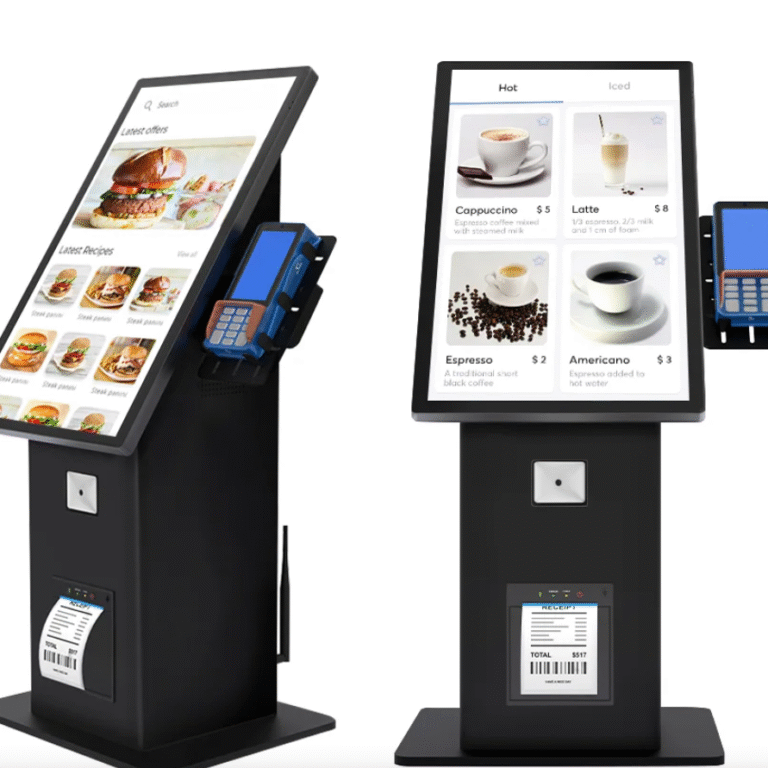How Does Digital Signage Power the USPS Self-Service Kiosk Experience?
USPS Self-Service Kiosks have fundamentally reshaped the landscape of postal transactions, transitioning from purely human-mediated services to a seamless, round-the-clock digital experience. For digital signage product users—manufacturers, systems integrators, and content creators—these ubiquitous terminals represent a profound case study in the power of interactive display technology. The core of this transformation isn’t merely the automation of mailing tasks; it is the strategic deployment of advanced display hardware and sophisticated content management systems (CMS) that defines the modern USPS Self-Service Kiosk. This exploration delves deep into how digital signage principles are essential, not just as a component, but as the very operational backbone of these critical public services.
The Unseen Architecture: Digital Signage as the Foundation of the USPS Self-Service Kiosk

To understand the immense value proposition of the USPS Self-Service Kiosk, one must look beyond the immediate action of buying stamps or printing postage. These terminals are, at their technological heart, specialized digital signage installations. Their design demands the pinnacle of display performance: clarity, durability, and unparalleled reliability. Digital signage in this context moves far beyond static informational displays; it becomes a dynamic interface, a point-of-sale, and an immediate customer service representative rolled into one robust machine. The display unit must withstand continuous use, varying light conditions—from the glare of a sunny window to dim lobby corners—and maintain perfect touch responsiveness.
The technical requirements placed on the screen are demanding. High brightness ratings (often 1000 nits or more for ambient light visibility) are non-negotiable, and the use of protective, vandal-resistant glass or touch overlays is standard. For manufacturers focusing on interactive displays, the USPS Self-Service Kiosk serves as a demanding benchmark for product robustness and mean time between failures (MTBF). Moreover, the operating system and CMS running the kiosk must ensure secure, real-time data synchronization for accurate pricing, address verification, and transaction logging—a complexity managed by robust network infrastructure, a cornerstone of any professional digital signage deployment.
Elevating User Experience: Interaction and Intuitive Design
The success of any self-service apparatus hinges entirely on its user experience (UX), and here, digital signage principles truly shine. The graphical user interface (GUI) of the USPS Self-Service Kiosk is the content being delivered by the signage system. It must be exceptionally intuitive, guiding users—who may range from technology novices to experts—through complex processes like international shipping or insurance selection with minimal confusion.
Effective UX design within the kiosk framework leverages large, clear, and contextually relevant on-screen elements. Transactional processes are streamlined through a series of logical, step-by-step screens, ensuring the user is never overwhelmed. Crucially, the interactive display, often an integrated PCAP (Projected Capacitive) touch screen, provides the instantaneous feedback that builds user confidence. This rapid, tactile response is a direct outcome of high-quality digital display hardware and optimized software integration, areas where digital signage experts provide indispensable value. The system must also manage peripherals—scale, label printer, and payment terminal—with flawless coordination, all orchestrated through the display interface.
The Strategic Edge for Digital Signage Product Users

For businesses creating or integrating digital display technology, the lessons from the USPS Self-Service Kiosk are manifold. It demonstrates a high-return model for interactive public displays.
- Hardware Robustness and Durability: The kiosk validates the need for commercial-grade components designed for 24/7 operation. Manufacturers gain insight into the specific environmental and operational stresses public-facing interactive displays must endure.
- Remote Content and Device Management: A national network of kiosks necessitates a powerful, centralized CMS. This is where digital signage software vendors must excel, offering remote monitoring, patch management, and content updates (such as tariff changes or service alerts) without physical intervention at each machine. This capability is paramount to maintaining system integrity and responsiveness across thousands of locations.
- The Power of Timely Information: While primarily transactional, the screen can also display dynamic, non-transactional content—public service announcements, seasonal mailing deadlines, or promotional videos for USPS products—during idle moments. This subtle shift from purely functional to informational and promotional is a classic application of strategic digital signage. For content creators, this is an opportunity to design engaging, high-impact visuals that are quickly digestible.
Security, Accessibility, and the Ethical Imperative
Modern digital signage installations, especially those handling sensitive transactions like the USPS Self-Service Kiosk, must adhere to rigorous standards for security and accessibility. Security is multi-layered, encompassing physical anti-tampering measures and sophisticated data encryption protocols to protect user payment information. The digital display itself often requires specialized privacy filters or carefully managed viewing angles to prevent ‘shoulder surfing’ during PIN entry.
In terms of accessibility, the design must comply with ADA (Americans with Disabilities Act) guidelines. This translates to specific requirements for screen height adjustment, auditory cues, and support for input devices beyond touch, ensuring that the self-service experience is universally available. This focus on inclusivity is a core ethical responsibility in public-facing technology and represents a critical development area for interactive digital signage solutions. Companies that can seamlessly integrate these accessibility features into their display technology offer a superior product.
The Future Trajectory: AI Integration and Hyper-Personalization
The next evolution of the USPS Self-Service Kiosk will inevitably integrate advanced digital signage capabilities. Imagine kiosks utilizing integrated cameras and AI to offer hyper-personalized experiences. The display could recognize a returning user (via secure log-in or basic visual cues), instantly recall their preferred shipping methods, or offer proactive help based on detected items (e.g., suggesting appropriate insurance levels for a large package). This level of deep integration—where the display system acts as a smart personal assistant rather than just a transaction tool—is the frontier for interactive digital signage technology.
This strategic deployment demonstrates that the USPS Self-Service Kiosk is far more than a simple machine; it is a meticulously engineered interactive display system. For those in the digital signage industry, it stands as a testament to the essential role of robust hardware, intelligent software, and user-centric design in transforming public services and setting a high bar for all future self-service applications.
Frequently Asked Questions (FAQ)
Q1: What exactly is a USPS Self-Service Kiosk, and what services does it offer? A: A USPS Self-Service Kiosk is an automated machine, essentially a specialized interactive digital signage system, typically available 24/7 in Post Office lobbies. It allows users to purchase stamps, weigh and calculate postage, mail packages (up to 70 lbs), and purchase additional services like insurance without waiting in line with a clerk.
Q2: How does the display technology in the Kiosk differ from a standard commercial digital sign? A: The display technology in the USPS Self-Service Kiosk is typically an interactive, commercial-grade touch screen (often PCAP or Resistive) designed for high usage, exceptional brightness (for visibility in various lighting), and enhanced durability (often with tempered, vandal-resistant glass) compared to general-purpose commercial signs. It must also have flawless integration with peripherals like scales and payment systems.
Q3: How is remote content management relevant to the Kiosk network? A: Remote Content Management is crucial for the national USPS Self-Service Kiosk network. It allows the USPS to centrally and instantly update critical information like postage rates, service alerts, and holiday hours across thousands of machines simultaneously. This capability minimizes downtime and ensures all customers receive current, accurate information.




